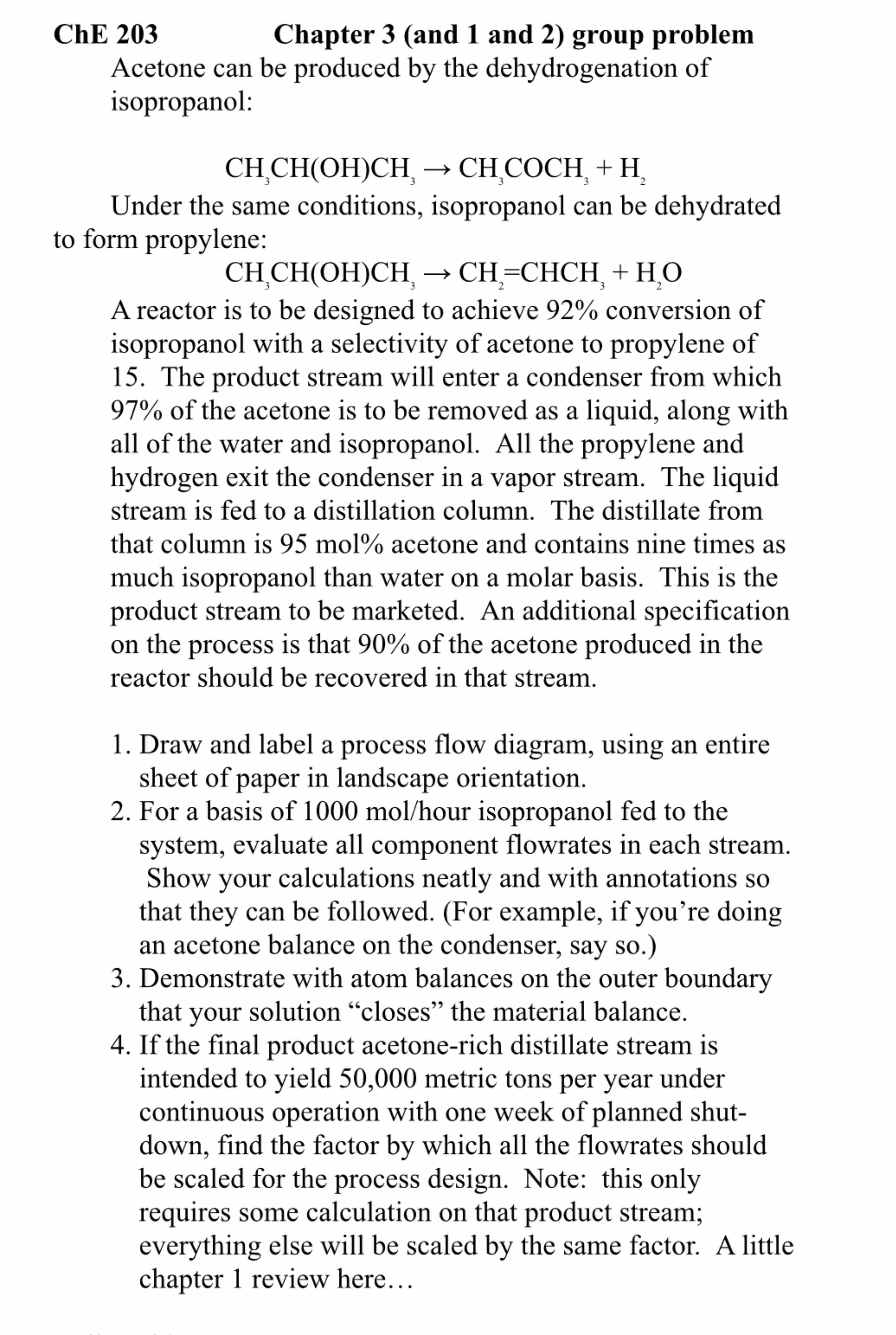Answered step by step
Verified Expert Solution
Question
1 Approved Answer
ChE 2 0 3 Chapter 3 ( and 1 and 2 ) group problem Acetone can be produced by the dehydrogenation of isopropanol: C H
ChE
Chapter and and group problem
Acetone can be produced by the dehydrogenation of
isopropanol:
Under the same conditions, isopropanol can be dehydrated
to form propylene:
A reactor is to be designed to achieve conversion of
isopropanol with a selectivity of acetone to propylene of
The product stream will enter a condenser from which
of the acetone is to be removed as a liquid, along with
all of the water and isopropanol. All the propylene and
hydrogen exit the condenser in a vapor stream. The liquid
stream is fed to a distillation column. The distillate from
that column is mol acetone and contains nine times as
much isopropanol than water on a molar basis. This is the
product stream to be marketed. An additional specification
on the process is that of the acetone produced in the
reactor should be recovered in that stream.
Draw and label a process flow diagram, using an entire
sheet of paper in landscape orientation.
For a basis of hour isopropanol fed to the
system, evaluate all component flowrates in each stream.
Show your calculations neatly and with annotations so
that they can be followed. For example, if you're doing
an acetone balance on the condenser, say so
Demonstrate with atom balances on the outer boundary
that your solution "closes" the material balance.
If the final product acetonerich distillate stream is
intended to yield metric tons per year under
continuous operation with one week of planned shut
down, find the factor by which all the flowrates should
be scaled for the process design. Note: this only
requires some calculation on that product stream;
everything else will be scaled by the same factor. A little
chapter review here...

Step by Step Solution
There are 3 Steps involved in it
Step: 1

Get Instant Access to Expert-Tailored Solutions
See step-by-step solutions with expert insights and AI powered tools for academic success
Step: 2

Step: 3

Ace Your Homework with AI
Get the answers you need in no time with our AI-driven, step-by-step assistance
Get Started


